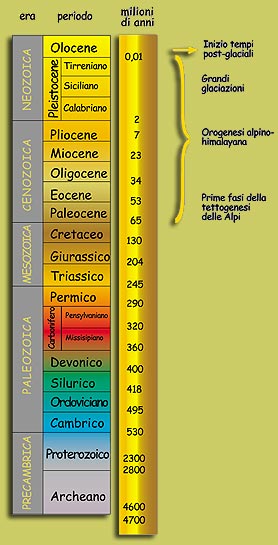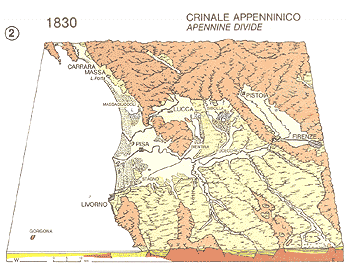The sinking of the axial zones of the Graben resulted in the sea invading the western areas. Inland to the east, the rivers created new lakes as they found their outlets blocked.
For about seven million years, at least from the Pliocene up to today, the coast of Tuscany has prevalently been a wetland, rich in fresh, sea and brackish waters.
Since then, the coastline has often advanced at the expense of the sea because of the sediment carried by the rivers.
At other times the sea had the upper hand when the foredeeps submerged again or the sea-level rose during warmer times as the polar icecaps melted.
Later, the continual load of sediments which the rivers deposited in the lakes gradually filled the basins.
The remains of lacustral vegetation also contributed considerably to their disappearance, as year after year they accumulated and slowly turned into peat.
The lacustral areas were also subjected to infilling by the sand and clay that the rivers carried on their way to the sea and deposited when the current slowed down at the estuary.
Nevertheless, in spite of the natural infilling processes, the wetlands have only seen their drastic reduction in recent history, through the works of man and his use of modern reclamation methods.









